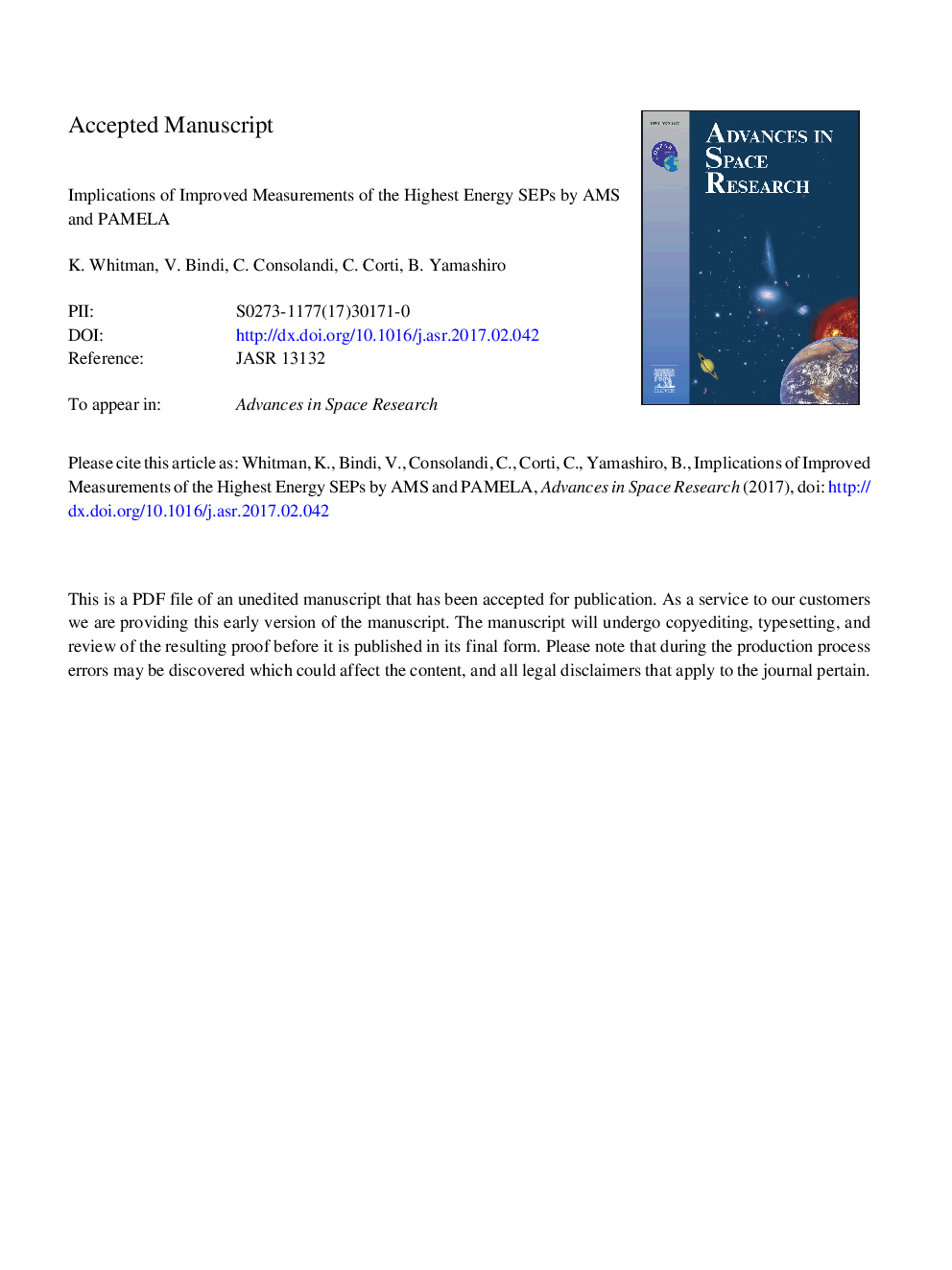| Article ID | Journal | Published Year | Pages | File Type |
|---|---|---|---|---|
| 5486628 | Advances in Space Research | 2017 | 28 Pages |
Abstract
Solar energetic particles (SEP) are a key target of heliophysics research, not only as exemplars of particle acceleration and transport processes that are ubiquitous in astrophysical plasmas, but also as the most intense transient radiation hazard for human and robotic space explorers. SEPs are very well-observed by spacecraft covering particle energies below several hundred MeV/nucleon. Multiple missions, stretching back over decades, have yielded a fairly complete description of SEP intensity, energy spectra, and composition up to a few hundred MeV/nucleon. SEP characteristics at higher energies are, by comparison, only poorly understood due to the relative dearth of high-energy measurements. This lack of high energy measurements has contributed to a disagreement within the heliophysics community regarding the source regions and mechanisms that accelerate particles up to GeV energies. In solar cycle 24, the Payload for Antimatter Matter Exploration and Light-nuclei Astrophysics (PAMELA) and the Alpha Magnetic Spectrometer (AMS) have been taking measurements of the highest energy SEPs from â¼100 MeV to the GeV. Since the literature has discussed SEP acceleration to GeV energies in terms of Ground Level Enhancements (GLE), we will review the findings for GLEs in solar cycle 23. We will discuss the models and theories that address acceleration up to the GeV and how AMS and PAMELA measurements have the potential to advance the current understanding of SEP acceleration physics. Lastly, only 1-2 GLEs have occurred during solar cycle 24, so we will explore a set of SEP events that were observed in the ⩾100 MeV GOES channels, most of which were also observed by PAMELA and AMS.
Related Topics
Physical Sciences and Engineering
Earth and Planetary Sciences
Space and Planetary Science
Authors
K. Whitman, V. Bindi, C. Consolandi, C. Corti, B. Yamashiro,
